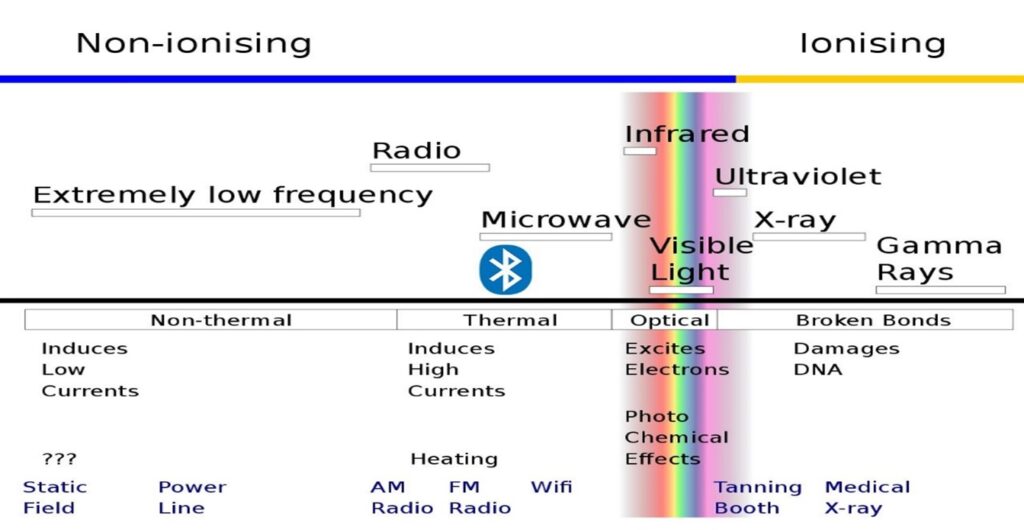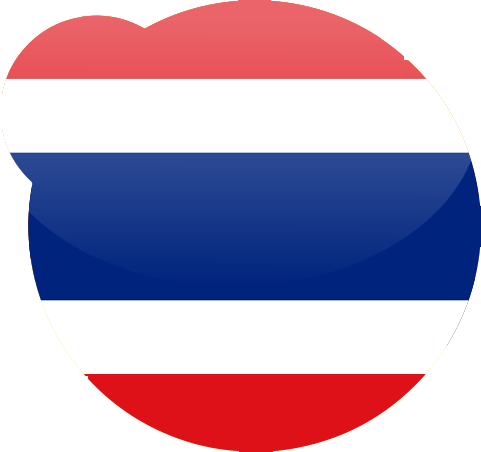Nt Campus
- Home
- Bluetooth – completely harmless
Bluetooth – completely harmless

Once again we want to deal with the issue of the safety of our product. After we discussed last time why EMS does not pose a risk to the heart, we would now like to turn to the question of the danger of electromagnetic radiation. The main source of electromagnetic radiation in our product is Bluetooth, which is used for communication between the app and the core.
Sekali lagi kami ingin menangani isu keselamatan produk kami. Selepas kita membincangkan kali terakhir mengapa EMS tidak menimbulkan risiko kepada jantung, kini kita ingin beralih kepada persoalan bahaya sinaran elektromagnet. Sumber utama sinaran elektromagnet dalam produk kami ialah Bluetooth, yang digunakan untuk komunikasi antara apl dan teras.
Bluetooth technology
Bluetooth uses radio frequencies of the worldwide unlicensed ISM band (ISM = Industrial Scientific Medical) between 2.4000 and 2.4836 Gigahertz (Ghz). There are different transmitter powers, in our product a transmitter with the strongest power of class 1 is installed. This has a maximum power of 100 milliwatts (mW) and can thus have a range of up to 100 meters.[1] Bluetooth owes its name to the Danish King Harald Blauzahn – but is much more harmless than its patron, as we will see in a moment.
Electromagnetic radiation with a frequency in the low gigahertz range belongs to the so-called microwaves, which in turn are part of non-ionising radiation.
Biological effect and biological danger – a difference
When we talk about biological effects, we mean any kind of measurable change in a biological system after the occurrence of a stimulus. Not every observable biological effect, however, necessarily means a biological danger or an adverse health effect. Only if a biological effect causes a “demonstrable impairment of the health of the individual or his or her offspring” does the effect become a source of danger.[2]
The biological effect of frequencies between 0.1 Gigahertz and 10 Gigahertz is mainly the generation of heat by the absorption of electromagnetic radiation.[3]
“Exclusively thermal effects are to be expected as biological effects of radiation in the low gigahertz range. The warming of the body due to Bluetooth is less than the warming caused by the training itself.”
– Judith Münch
Dangerous heat from electromagnetic radiation?
To be able to classify how much heat that is, let’s consider a conventional microwave oven. Most conventional microwaves work with 700-800 watts. This is used to defrost and cook food that is located in the middle of the radiation. Our Bluetooth chip, as a class 1 transmitter, has a maximum power of 100 milliwatts, which corresponds to 0.1 watts and thus 0.01% of the power of a microwave.
Heat can be particularly harmful to the reproductive organs of the man, so we would like to calculate more precisely how much heat is generated in the body by this radiation.
For this we assume that the body consists of 100% water and use the specific heat capacity of water. This is 4.2 kilojoules per kilogram and Kelvin. This means that to heat 1 kilogram of water by 1 Kelvin (that is one degree Celsius) you need 4.2 kilojoules of heat.[4]
The electromagnetic radiation emitted by the transmitter in the Nt Core radiates in all directions, so the athlete’s body only receives about 50% of the radiation. If we assume a maximum value of 100 milliwatts, then the body absorbs a maximum of 50 milliwatts (that is 0.05 watts). Thus, during a training session of 30 minutes (1800 seconds), a heat of 90 watt seconds is absorbed at most (1800 seconds x 0.05 watts). 1 watt second corresponds to 1 joule, so 90 watt seconds is a maximum of 90 joules of heat (0.09 kilojoules) absorbed during training.
If we assume a petite athlete weighing 60 kilograms and use the specific heat capacity of 4.2 kilojoules per kilogram and Kelvin, then the body of an athlete heats up by a maximum of 0.00036 degrees due to the electromagnetic radiation. The body heats up significantly more just by heating up during training. We can therefore assume that there is no harmful effect on health from the electromagnetic radiation.
- 1 Bundesamt für Strahlenschutz., Sprach-und Datenübertragung per Funk: Bluetooth und WLAN. 2012. 2017.
- 2 Protection, I.C.o.N.-I.R., Guidelines for limiting exposure to time-varying electric and magnetic fields (1 Hz to 100 kHz). Health physics, 2010. 99(6): p. 818-836.
- 3 Martin, C.J. and D.G. Sutton, Practical radiation protection in healthcare. 2015: Oxford University Press, USA.
- 4 Geller, W., Wärme, in Thermodynamik für Maschinenbauer. 2000, Springer. p. 118-129.
Image Source Spazturtle [CC-BY-4.0]
GET IN TOUCH
Write us a short message to receive your desired information. Alternatively, you can contact one of our distributors in your region directly.















